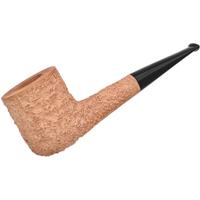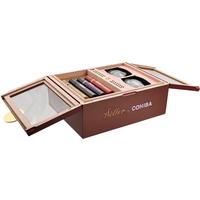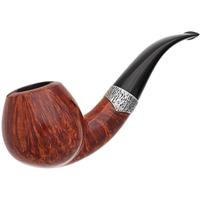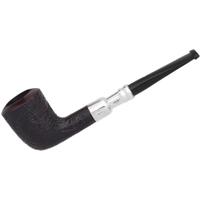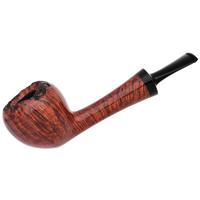This is silly. The initial assertion just isn't true. It also just misses the point.
Tom's pipes aren't fraized. He does a fairbit, including on these, with templates on a lathe, with the detail work done on a sanding disk, but this is substantially equivalent to how any good pipe maker would make a billiard, but with a slightly more sophisticated lathe (that lets him control angles to align for drilling in the same step that he's turning the shank, except in this case, he's turning the shank round and then, I presume, reshaping to the oval on the sanding disk).
Fraizing refers very specifically to a multi-step process by which a stummel is has various shaping steps done by a machine with metal templates determining the shape. Generally, it's something that happens only on an industrial scale because the efficiencies associated with the production method can only be had at really large quantities: specifically to this, even if Tom were so inclined, it'd be crazy for him to deploy the machinery at tool up for a run of this size (forty pipes). This is how most Peterson, Chacom, Savinelli etc pipes are made.
There's another method that the Danes usually describe as 'copy-fraizing,' which refers to a machine that, fairly slowly, copies a pipe from a plastic template (or in some cases from an existing stummel that was hand shaped). The shaping is pretty rough and requires some refinement after the fact. This is how, for example, most Neerup pipes are made. Chacom has both fraizing equipment and a copy-fraizer. They only use the latter in specific circumstances when they can't use the former because a) it's slower, and b) it requires more (or at least different) expertise to run.
There are a bunch of different ways to get to the same result, and the result is the bit that matters. Fraizing leaves the manufacturer with very, very little control over grain patterns and the like, but it's a fairly efficient way to turn, say, 400 bowls. The Danish copy-fraizer offers more shaping flexibility and more control over grain placement, but requires a bunch more expertise to run and it's a lot slower.
What Tom is doing is turning the bowls on a lathe, using a template guide that he made to help with consistency of shape and to speed the process up some. It still requires a ton of work around the shank/bowl junction to get the cheeking right and critical knowledge to manage the process to yield good pipes.
The declarative statement that these are fraized is a) wrong, and b) pretty much misses the point. The goal here is to create the best pipe possible. Given that Tom is one of the most skilled pipe makers in the world, he's going to do whatever yields the best pipes.
Tom also makes a substantially similar shape under the Sara Eltang label that has different production standards and methods. The Tom Eltang pipes have hand cut vulcanite stems; the Sara Eltang version has stems made from modified acrylic blanks, for example. There are a number of other differences associated with the care with which they are finished.
So, the Tom Eltang Devil Anse pipes are entirely made by Tom, turned on a lathe, shaping is finished on a sanding disk, he sands and stains, and cuts vulcanite mouth pieces. The Sara Eltangs of the same shape are largely handled similarly with lower standards for the finishing, wood and the stems are modified acrylic blanks. In the case of the Sara Eltang pipes, some of the work is done by people Tom hires from time to time, but that isn't true of the Tom Eltang pipes (and most of the work on the Sara Eltang pipes is done by Tom).
As for Peter Heeschen, the classics (of which we've had few for years) are hand turned on a lathe and the freehands (think not perfectly radially symmetrical bowls) are shaped on a sanding disk. If you look at a half dozen Bent-P shapes in person, that's pretty obvious because there's tremendous variation from pipe to pipe.
The original poster seems to suggest that either or both of these pipe makers are being somehow misleading and that this is somehow scandalous. He also seems to suggest that he has some super secret source of juicy details. Guys: it's pipe making; there just isn't any juicy scandal!
Sykes



